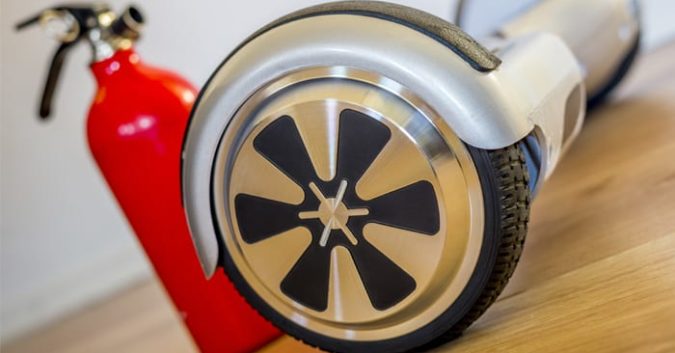Plugged into an electrical outlet in a Harrisburg townhouse, the hoverboard first began to sizzle, sending sparks flying into the air. A few minutes later, the device completely exploded – setting the room afire, and soon, the entire townhome.
Caught in the tragic fire? Two young girls: Ashanti Hughes, aged 2, and Savannah Dominick, aged 10. At the sound and smell of the smoke and fire, Savannah, who was asleep on the ground level, sprinted up the stairs to her younger relatives, hoping to help them escape the flames.
According to U.S. Consumer Product Safety Commission (CPSC), this fire is the first confirmed fatal fire directly caused by an exploding hoverboard. Though there have been thousands of adverse reports of hoverboard-related fires, hundreds of burns, injuries, and property damages, and massive recalls (the latest of which was a 500,000-unit government recall), this is the first case in which the agency linked the death of 2 individuals directly to the faulty hoverboard.
CPSC Warns All of Us: Stop Using LayZ Board Hoverboards
Accordingly, the CPSC is urging consumers to immediately halt all use of LayZ Board self-balancing scooters (hoverboards). This, of course, is due to the evidence that the agency has proving the LayZ Board was the hoverboard that killed the 2 young, Harrisburg girls.
Due to the fire-hazard risk for which all consumers are subject to, CPSC has issued an “urgent” warning for the American public to:
- Stop using the hoverboard and...
- Stop charging the device altogether. They are also requesting that anyone who is aware of this information to share it with friends and family, so that they, too, may avoid similar fatal incidences.
The LayZ Board Problem
More than 3,000 LayZ Board hoverboards were imported into the United States from Shenzhen, China, where the devices were manufactured.
This hoverboard is a 2-wheeled, lithium-ion battery-powered, self-balancing scooter that has a pivoting platform intended for the rider’s feet. As is the case with most hoverboards, the LayZ Board does not have a handlebar.
The lithium-ion battery is at the forefront of most hoverboard-related controversy. Lithium-ion batteries have a tendency to overheat, smoke, and, thus, catch fire and explode.
Typically, in instances such as these, the CPSC would work with the manufacturing company to issue an official product recall. The fact that no such recall has been issued yet leads many to believe that the company that manufactured the devices – based out of China – is not cooperating with the U.S. government.
CPSC Continues Its Investigations across the County
Though 2 lives were lost, the fire that raged in Harrisburg was large and quickly controlled by the local city fire department. Given this, CPSC extends their heartfelt thanks to the Harrisburg Fire Department and to the families that were affected by the lethal fire — both for their time and their cooperation with the agency’s investigation.
LayZ Board hoverboards were not among those included in the CPSC’s hoverboard recall last July. Consumers who choose to get rid of their LayZ Board hoverboards, should dispose of them at a local recycling center; a national list of which can be found here.
"The fire risk with this product is serious," CPSC Acting Chair Ann Marie Buerkle said in a statement. "Consumers should immediately stop using and stop charging the LayZ Board -- it’s just not worth the risk to your safety and the safety of your family."
CPSC continues its investigations; presently it is also investigating more than 100 non-fatal incidents across 39 U.S. states. These incidences involve a number of different hoverboards, manufactured by many different companies.
